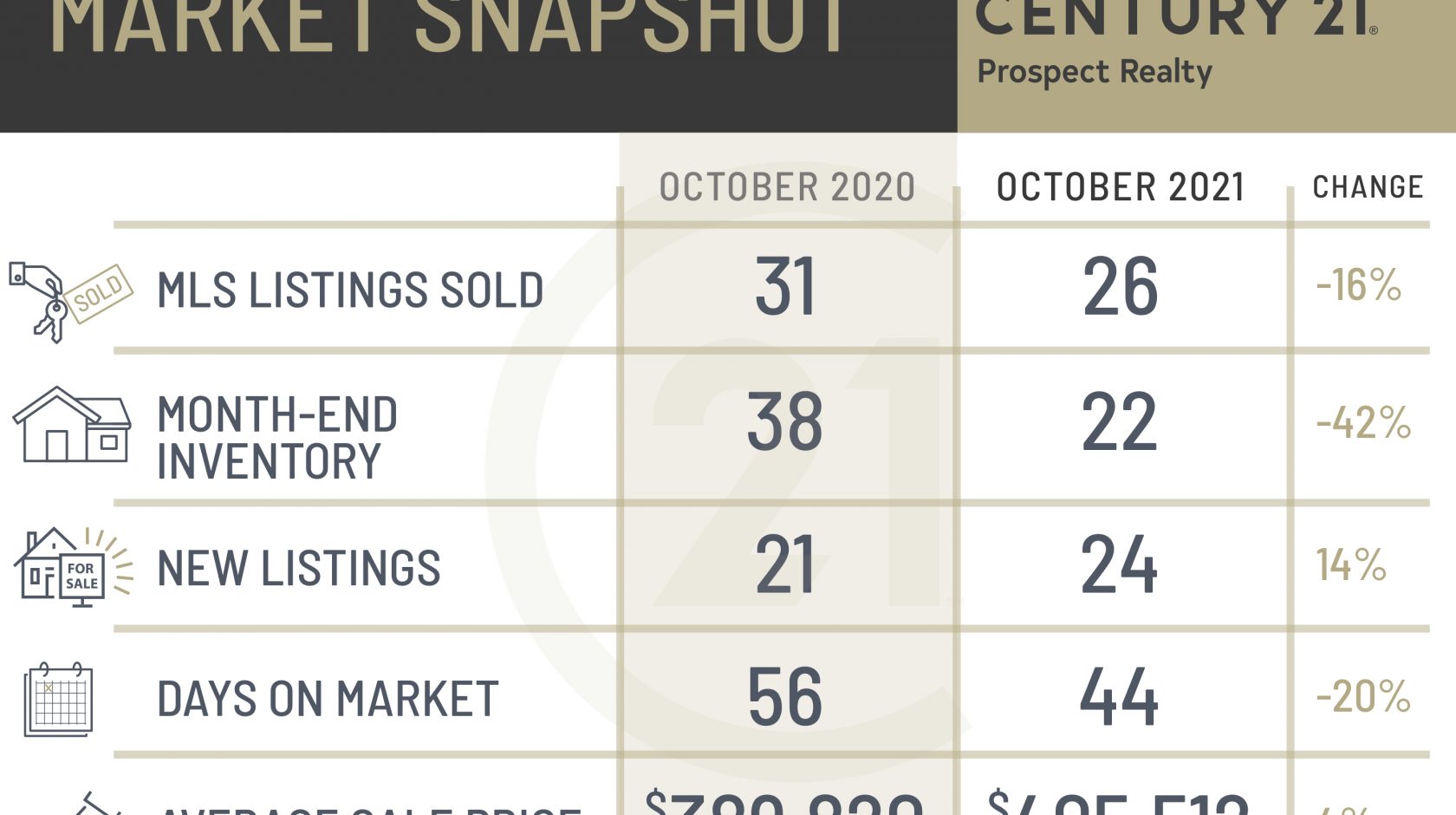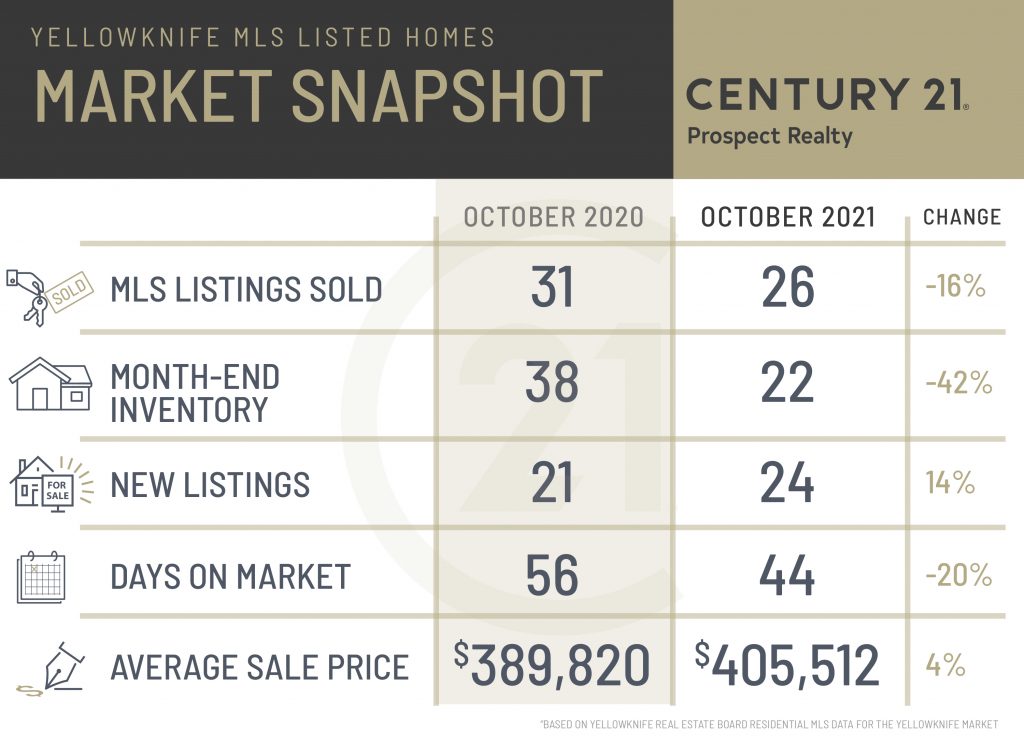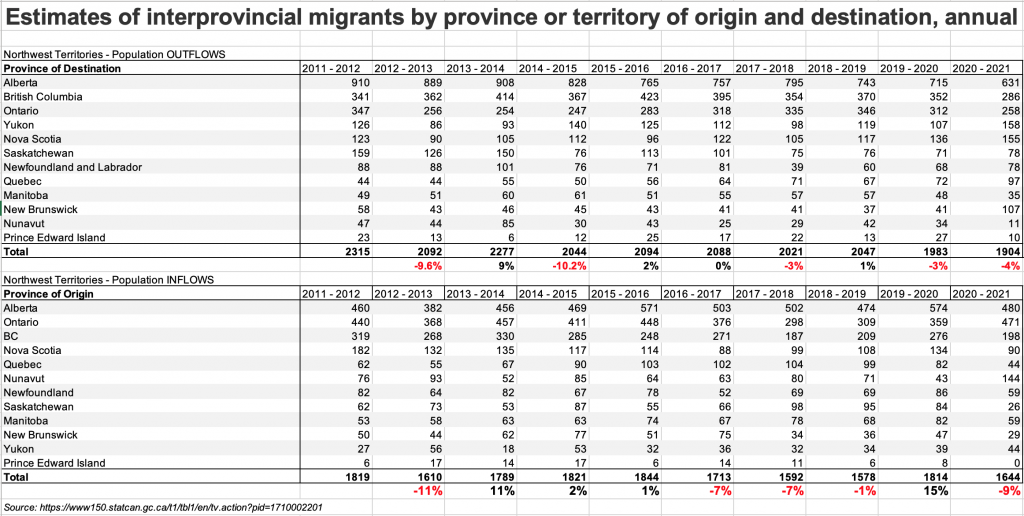Market Review: October 2021
One more month of 2021 is in the books, and the prevailing theme continues to be low inventory. As of the end of October there were only 22 listings in Yellowknife. With so little to choose from, it’s understandable that the number of sales has come down a touch.
Average prices were up a bit, but as we enter into the slower winter months, average sale price figures become less reliable. The sample sizes get smaller and smaller so a few high or low priced listings can really skew the results. Once we get through the next two months, I’ll be able to provide a clearer picture of average sale prices by taking a look at the year as a whole. Prices are surely up, but the two most important questions are by how much and how do we compare to the rest of Canada?
I’ve had a lot of conversations with folks about the current market, and it’s pretty interesting to hear some of the anecdotal impressions people get by watching their neighbourhoods, or from conversations with friends. “A lot of people seem to be leaving town” is a comment that I’ve heard pretty frequently over the last four months. But from what I can tell, the opposite is true, and it’s one of the main reasons inventory numbers are so low. People are staying put.
I won’t have the numbers for 2021 until next summer, but the 2020 statistics for people flowing into and out of the territory are pretty telling. And in fact, these aren’t numbers for calendar 2020, but for fiscal 2020/2021, which is even better, because they reflect 12 full months of pandemic (April 202o to March 2021).
In 2020/2021, inflows were not exactly record breaking, but they weren’t abnormally low. Over the last decade they have been lower three times – 2012/2013, 2017/2018 and 2018/2019. But outflows, people leaving the NWT, were lower than any other year in the past decade, and by a good margin. So in other words, inflows are down a bit, but outflows are down a lot. And with almost no new housing stock being built, the result is fewer net homes listed for sale.
I should point out that these are territorial figures, so they include more than just Yellowknife, but Yellowknife accounts for the lion’s share of transactions. And, if anything, Yellowknife tends to benefit from in-flows from the other communities.
All this to say, unless something significant happens in the next three to four months which enables a return to the mobility we were used to pre-COVID, it’s probably going to be another hectic year in the Yellowknife real estate market.








